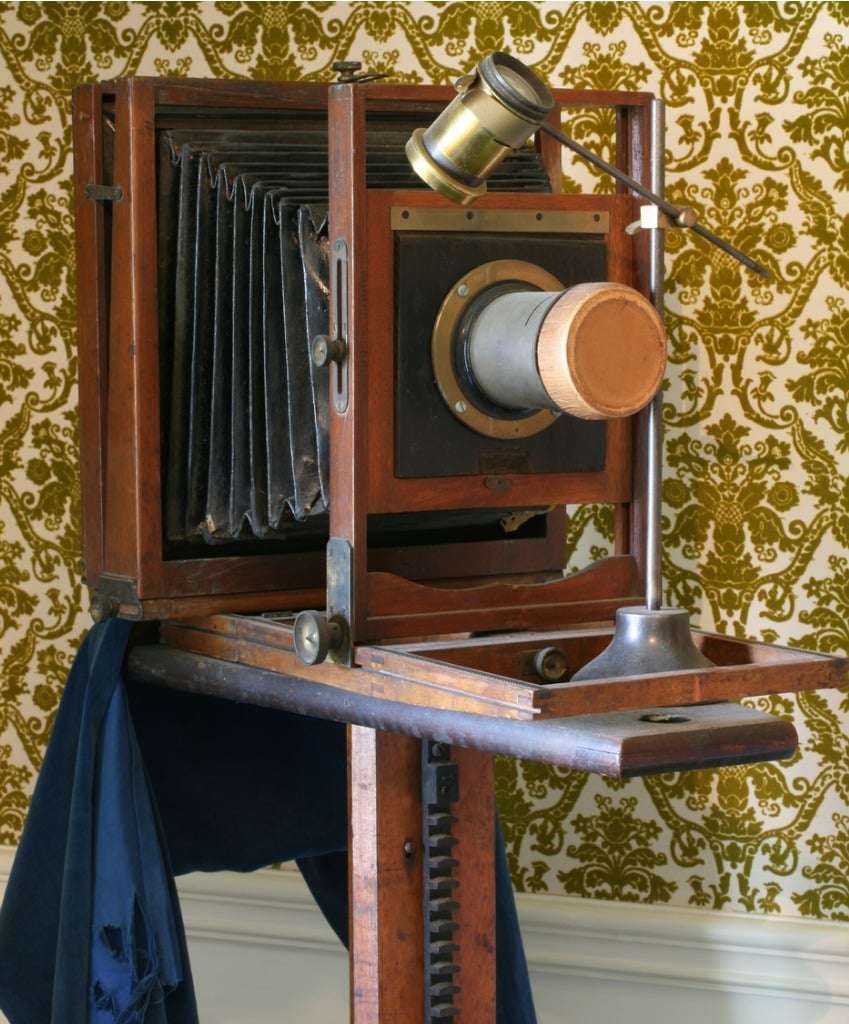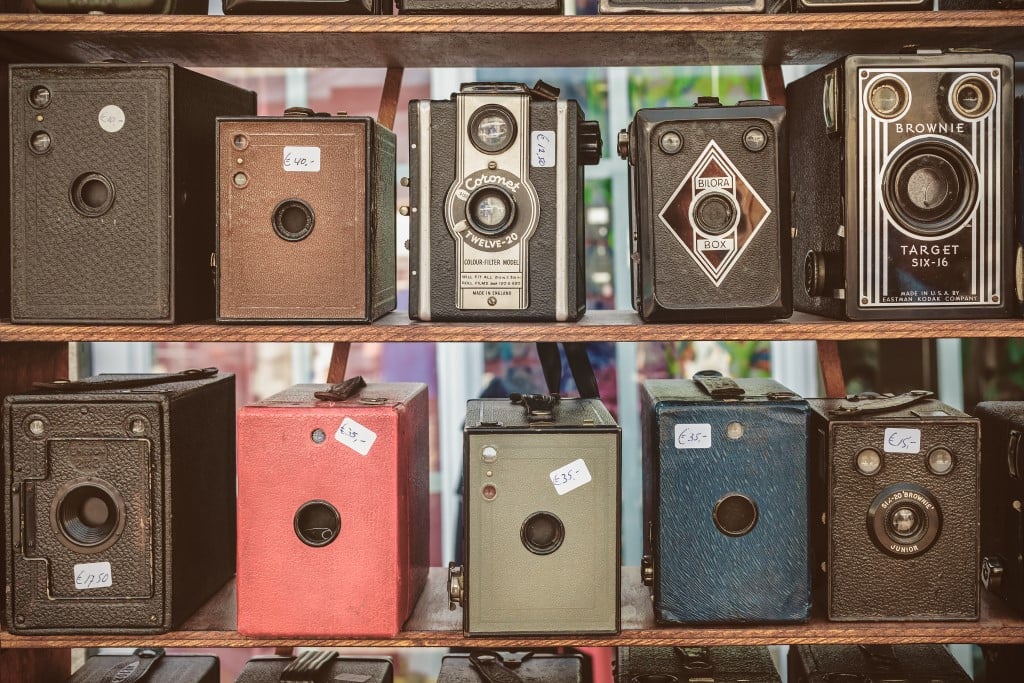THE BEGGINING – 1826
The worlds first photograph was made in a camera in 1826 by Joseph Nicéphore. The photograph was taken from the upstairs windows of Niépce’s estate in the Burgundy region of France. It was the worlds first image that didn’t fade quickly. He used camera obscure to capture his image, however he added a photo sensitive plate coated with silver chloride, which darkened where it was exposed to light. This is how he recorded his image.

It took 8 hours to record the image. You can see sunlight illuminating both sides of the buildings. He made it by exposing a bitumen-coated plate in a camera obscura for several hours on his windowsill. Which leads to the question what is camera obscure?
Camera obscura is the Latin name means “dark chamber,” and the earliest versions, dating to antiquity, consisted of small darkened rooms with light admitted through a single tiny hole. The light rays enter the tiny hole and inside the box there will be the scene projected on the wall, however it will be upside down. Camera obscura isn’t a camera, it was invented by a Chinese philosopher called Mo-tzu (or Mozi) in 400BC. He noted that light from an illuminated object that passed through a pinhole into a dark room created an inverted image of the original object. Although, the first known date that camera obscura was 1021 AD.
DAGUERREOTYPE – 1837
In 1837, Louis Daguerre introduces the daguerreotype, a fixed image that did not fade. From 1839 on, the popular metal plate process known as daguerreotype opened up this mix of art and technology to the masses. The daguerreotype is a direct-positive process, creating a highly detailed image on a sheet of copper plated with a thin coat of silver without the use of a negative. The process required great care. After exposure to light, the plate was developed over hot mercury until an image appeared.
It was one of the easier metal plate photographic processes, it was still messy, expensive, very time consuming, and somewhat dangerous.

CALOTYPE – 1841
Calotype, also called Talbotype, is an early photographic technique invented by William Henry Fox Talbot in the 1830s.
In this technique, a sheet of paper coated with silver chloride was exposed to light in a camera obscura; those areas hit by light became dark in tone, yielding a negative image. The revolutionary aspect of the process lay in Talbot’s discovery of a chemical (gallic acid) that could be used to “develop” the image on the paper, it accelerates the silver chloride’s chemical reaction to the light it had been exposed to. The developing process permitted much shorter exposure times in the camera, down from one hour to one minute.
The developed image on the paper was fixed with sodium hyposulfite. However, if you touched the paper it would destroy it, as the emollition sits on top of the image. The “negative,” as Talbot called it, could yield any number of positive images by simple contact printing upon another piece of sensitized paper. Talbot’s process was superior in this respect to the daguerreotype, which yielded a single positive image on metal that could not be duplicated. Talbot patented his process in 1841.

KODAK – 1888
George Eastman of Rochester, New York had an idea. Use this new roll film, build a simple, easy-to-use camera, and market it as a fun use product. In the history of photography, Eastman was a master of marketing photography to the masses. “You push the button, we do the rest.”

POLAROID CAMERA – 1948
Edwin Land launches the Polaroid camera. He invented inexpensive filters for polarizing light, a practical system of in-camera instant photography, and the retinex theory of colour vision, among other things. His Polaroid instant camera went on sale in late 1948 and made it possible for a picture to be taken and developed in 60 seconds or less.

CANON DIGITAL – 1984
In 1984 Canon demonstrates first digital electronic still camera, which set the path for digital photography for todays world.
